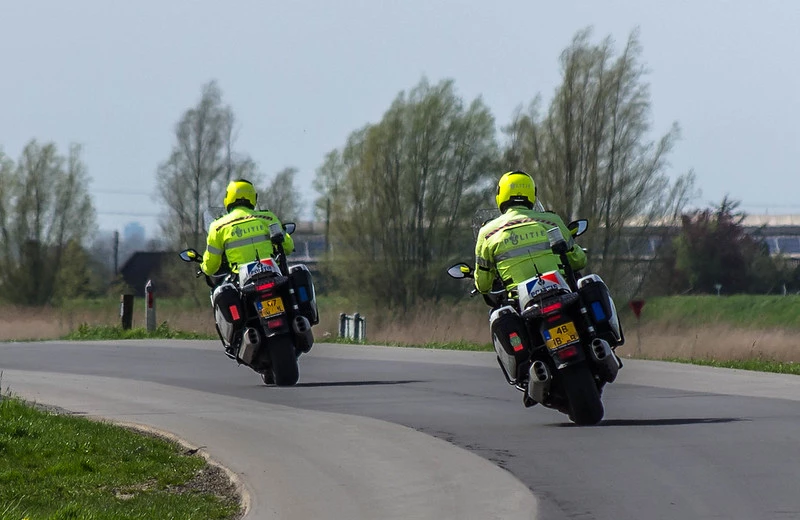You must have heard a lot about the ‘’no chase law’’. States like California, Texas, New Orleans, New Jersey, Iowa, Albany, and Illinois specifically follow this rule for bikes. They have been holding this unique position with respect to the chasing of suspected motorcyclists for years and years.
‘’Public safety’’ is their top concern and priority and these states do not want to risk the lives of civilians while pursuing the suspects on motorcycles.
Every state has its own binding laws when it comes to the operations of motorcycles. On this platform, you can check out the guide: what states have a no-chase law for motorcycles? If any confusion still comes into your mind, ask us anytime:
What is a ‘’no chase law’’?
According to this law:
Police cannot chase you even if you have violated the traffic rule or do not have a license. Any police officers or law enforcement personnel are not allowed to chase the suspect in vehicles.
If the suspect has done a violent crime or planning to harm the lives of civilians, only then he can be chased.
”No chase law” is also known as the pursuit policy. It is the specific guideline and ruling created by the law enforcement agency of the respective state. Clear-cut policies have been outlined that explain under which circumstances chase is allowed and when it should have refrained. Overall, this law does not allow police personnel to engage in high-speed pursuits with bikes.
States following the ‘’ no chase law’’ for motorcycles
As mentioned above, multiple states that abide by this law have been identified. The common ones are California, Colorado, Texas, New Orleans, New Jersey, Iowa, Louisiana, Albany, Nebraska, South Bend, and Illinois.
The primary reason to follow this rule is that police do not want to hurt innocent pedestrians while pursuing a person who has done something wrong, illegal, or violated any statute. The situation worsens when police chase the wrongdoers by over-speeding the vehicle. This whole practice gives zero results! Overall, the launch of this ruling is primarily intended for public safety as well as to avoid loss of life.
”No chase law” does allow the police to follow the motorcyclist at a distance, but public safety will always be their priority. Instead of chasing, what they do is contact the cops of other police stations to seek help regarding tracking that motorcyclist and blocking his route.
Alabama also follows this ruling and the interesting part is that people are allowed to ride a bike without a license. Furthermore, California is another motorcycle-friendly state. It means police will not chase you even if you have flouted the traffic law.
Presently, these states’ governments are revising this ruling to ensure more and more public safety. They strongly believe that police chases only bring the lives of civilians and police officers in the riskiest zone.
Purpose of ”no chase law”

Below we have comprehensively explained the prime purpose of ‘’no chase law’’:
- The primary objective of introducing this ruling is to ensure public and police office safety. Motorcycle pursuits are dangerous and life-risking due to the increased speed of bikes. With the implementation of this law, a reduction in accidents, collisions, and crashes is witnessed. High-speed chases have always resulted in fatalities, which is why it became the need of the hour to implement this law.
- Motorcycle pursuits have consistently brought immense risks and life-threatening situations for innocent pedestrians and bystanders. In addition, chasing the wrongdoers through crowded areas at high speed will only bring collateral damage and loss of civilian lives. However, with this ”no chase law”, civilians’ safety is no longer compromised.
The role played by CHP and FHP in implementing the ”no chase law.”
In 1983, California Highway Patrol (CHP) gathered data on itself and 10 other agencies for a 6 month period. They reported that 7 out of 10 (70%) police pursuits result in an accident, and less than 29% are involved in collisions. Past studies also claim that 20% of pursuits cause death.
California Highway Patrol (CHP) has always played a very responsible role in terms of balancing the apprehension of suspects and ensuring the safety of the public. Pursuits are authorized and officially allowed only when the suspect has committed a severe violent crime or poses an alarming danger to public safety.
On the other hand, Florida has been one of the front-runners that have officially adopted motorcycle pursuit policies and seem the biggest supporter of the ”no chase law’’. The importance of public safety has been continuously addressed from their end. Besides, the Florida Highway Patrol (FHP) has developed specific protocols regarding when and when not to chase the suspect. Their team evaluates the risks before pursuing the suspected motorcyclist.
FAQs
Conclusion:
So, what’s the bottom line? Motorcycle no chase laws are entirely intended to guarantee public safety. These policies minimize the risks and dangers that are generally linked with high-speed pursuits.
It is high time that all states make informed decisions regarding balancing the public safety aspect and catching the suspected motorcyclists.
So far, that is the end of the discussion about the motorcycle-friendly states implementing the ”no chase law”. If you can think of any other state that prevents police officers from chasing motorcyclists, let us know about them. And feel free to share with us your feedback what your thoughts and opinions are on this ruling. Stay tuned; we will explore more rulings and laws linked with motorcycles.
